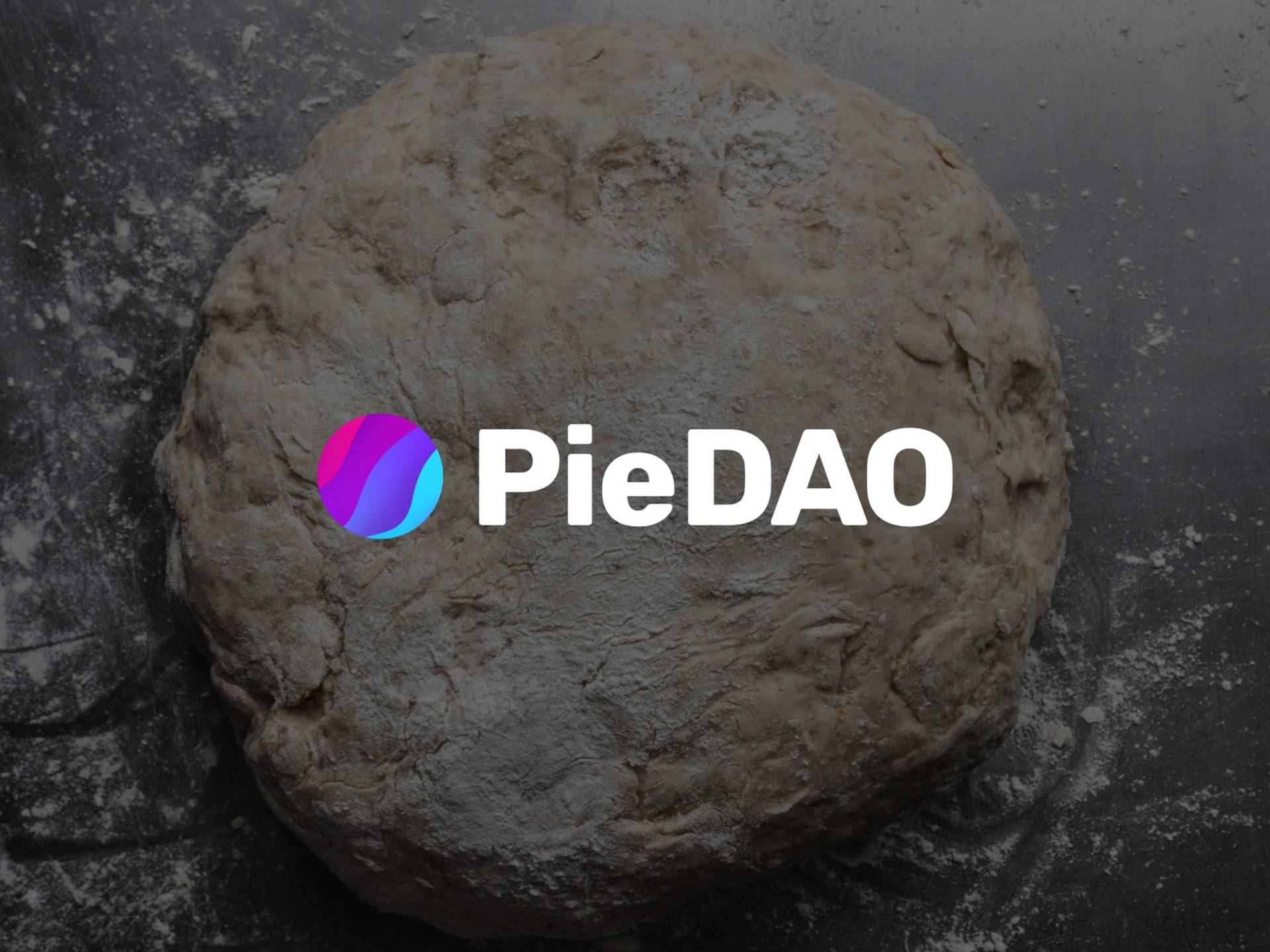위키 구독하기
Share wiki
Bookmark
PieDAO
PieDAO
PieDAO(파이다오)는 사용자가 Balancer(밸런서) 프로토콜에서 다양한 ERC20 토큰으로 구성된 풀링된 인덱스 펀드의 생성 및 매개변수에 대해 투표할 수 있도록 하는 분산형 조직입니다. PieDAO의 DOUGH(도우) 토큰은 거버넌스에 사용되며, 프로젝트의 DAO 인프라는 Aragon(아라곤)이 제공합니다. 암호화폐 지갑 Dexwallet(덱스월렛)과 POS(판매시점) 서비스 Dexpay(덱스페이)의 개발진이 PieDAO를 개발했습니다.[1] 2020년 10월 5일, PieDAO는 프로토콜에 1억 2,400만 달러 상당의 암호화폐가 스테이킹됨에 따라 총 가치 잠금(TVL) 기준으로 세계 암호화폐 분야 최고의 DAO가 되었습니다.[2]
서비스
PieDAO를 통해 누구든지 암호화폐 및 전통 자산(합성 자산을 통해)에 대한 노출을 포함한 토큰화된 포트폴리오 할당을 생성할 수 있습니다. 이러한 토큰화된 포트폴리오 할당은 "PIE"라고 하며, 전 세계 어디에서든 인터넷에 접속할 수 있는 사람이라면 누구든지 24시간 이용할 수 있으며, 모두 이더리움 네트워크에서 이루어집니다. 중요한 점은 PIE는 사용자에게 최소 예치금이 필요하지 않으며, 수수료는 DAO의 활동 회원들 사이에서 공유되는 최소 수수료만 부과됩니다.
PIE와 PieDAO의 도입은 이더리움의 구성 가능성에 새로운 금융 레고를 제공합니다. 핵심 할당이 이루어지면, 서로 다른 PIE를 묶어 새롭고 더 안정적이며 다양화된 PIE를 만들 수 있습니다.
PIE를 통해 DeFi 사용자는 여러 가지 다른 토큰화된 포트폴리오(전통 자산으로 채워진 포트폴리오, 암호화폐 자산으로 채워진 포트폴리오, 이자를 발생시키는 스테이블코인으로 채워진 포트폴리오)에 액세스할 수 있으며, 모두 단일하고 쉽게 관리할 수 있는 ERC20 토큰으로 최소 수수료만 발생합니다.[3]
PieDAO 거버넌스
PieDAO는 DOUGH 토큰으로 거버넌스되며, 토큰 보유자는 조직의 회원이 됩니다. DOUGH를 통해 사용자는 DAO의 거버넌스 투표에 참여하고 자신의 제안을 제출할 수 있습니다. 토큰 보유자는 자산의 가중치, 위험 평가, 권리 및 공정한 수수료 등에 대해 협력하고 투표할 수 있습니다.
거버넌스는 일반적인 Discord(디스코드) 토론에서 시작하여 DAO의 공식 포럼 게시글로 이어지고, 마지막으로 GitHub(깃허브)의 재무 사양인 Pie Improvement Proposals(PIP)(파이 개선 제안)으로 끝납니다.
DOUGH 보유자가 PieDAO를 잘 거버넌스하면 PIE가 인기를 얻고 거버넌스 참여자가 현금화할 수 있는 상당한 수수료가 발생합니다.
DOUGH 토큰
2020년 10월 2일, PieDAO는 DOUGH의 공식 토큰 경제에 대한 청사진을 발표했습니다. 또한 유동성 마이닝 캠페인과 초기 밸런서 오퍼링도 발표했습니다.[4]
2020년 10월 3일에 시작될 예정인 DOUGH 초기 밸런서 상장은 Balancer 80/20 $DOUGH/$ETH 유동성 풀에서 150만 DOUGH를 제공했습니다. 이는 약 0.0015ETH/DOUGH의 초기 상장 가격을 나타냅니다.[5]
$DOUGH 토큰 출시 3일 후, PieDAO는 총 가치 잠금액이 1억 2,400만 달러를 넘어 DeepDAO(딥다오)에 따르면 총 가치 잠금액 기준으로 1위 DAO가 되었습니다.[6]
DOUGH v2
2020년 가을, PieDAO는 DOUGH v1에서 DOUGH v2로의 마이그레이션 프로세스에 대한 Medium(미디엄) 기사를 게시했습니다.[7] DOUGH v1 토큰은 양도 불가능한 토큰으로 발행되었지만, DOUGH v2 토큰은 양도 가능합니다. PieDAO는 Aragon 애플리케이션을 사용하여 사용자의 마이그레이션 프로세스를 더욱 원활하게 했습니다.[8][9]
DOUGH Farming Season
토큰 발표와 함께 DOUGH Farming Season(도우 파밍 시즌)이 도입되었으며, 몇 주에 걸쳐 DOUGH가 대량으로 배포되었습니다. PieDAO가 이를 진행하기 위해 취한 첫 번째 단계는 유통 중인 6,000만 DOUGH v2 토큰을 제거하는 것이었습니다. 이러한 토큰은 유동성 마이닝을 통한 개발 촉진을 포함하여 토큰 지원과 함께 제공되는 기타 인센티브를 통해 DAO에 할당됩니다. 캠페인에 참여하려면 PieDAO 스테이킹 계약에 LP 토큰을 스테이킹하는 유동성 제공자여야 합니다. "1주차 배포"를 포함한 기타 프로그램은 10월 3일 토요일 오후 6시 UTC에 공식적으로 시작되었습니다.[10]
1주차 DOUGH Balancer Pools
다음 Balancer 풀은 25만 DOUGH의 1주차 배포 기간 동안 DOUGH를 받을 자격이 있었습니다.
- 20만 - DOUGH/ETH
- 2만 5천 - DAU/DEFI+S
- 2만 5천 - ETH/DEFI+S[11]
PieDAO USD++ 출시
PieDAO는 2020년 6월 16일 USD++ 풀 출시를 발표했습니다.
PieDAO는 미국 달러(USD) 기반 이더리움(ETH) 기반 스테이블코인의 헤지된 바스켓인 USD++를 출시했습니다. 이 분산형 조직은 장기간 스테이블코인을 보유하고 분산형 금융(DeFi) 프로토콜을 사용하는 것과 관련된 위험을 줄이는 것을 목표로 하고 있습니다.[12]
PieDAO USD++에는 보유자의 가격 변동성을 최소화하기 위해 가중치가 지정된 4가지 스테이블코인이 포함되어 있습니다. 가중치는 가장 강력한 페깅, 가장 큰 시장, 그리고 커뮤니티의 가장 큰 신뢰를 가진 스테이블 토큰에 따라 결정됩니다.
PieDAO는 2019년 6월 16일 USD++ 풀 출시를 발표하면서, 이 제품은 "자신 있게 현금 포지션을 유지하려는 다양화된 포트폴리오를 위한 한 걸음 나아가는 것"이라고 트윗했습니다.
USD++ 풀은 일반적으로 사용자가 플랫폼에 액세스하기 위해 자산을 예치해야 하는 이더리움 기반 DeFi 프로토콜 사용과 관련된 위험을 헤지하고 최소화하도록 설계되었습니다.
많은 암호화폐 거래자는 스테이블코인을 단기간에 자산을 이전하고 가치를 매기는 수단으로 사용하지만, 많은 DeFi 사용자는 장기간 스테이블 토큰을 보유하여 더 큰 위험에 노출됩니다.
잘못된 내용이 있나요?
